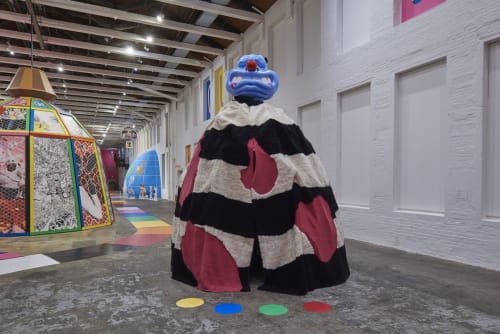The Armory Show to examine conflict and debate around public monuments
The 2022 edition of the New York fair will feature a section of large-scale installations organized by the Tate curator Tobias Ostrander
The Armory Show (9-11 September) has announced the forthcoming programming for the fair’s 2022 Platform section—a branch of the fair that has been running since 2016 and is dedicated to large-scale, site-specific works.
Organised by Tobias Ostrander, the curator of Latin American Art at the Tate in London, this year’s edition of Platform will be called Monumental Change, a theme that, according to a statement from the fair, will aim to “examine how recent revisionist practices, which are part of dramatic cultural shifts occurring throughout the world, are influencing artists’ engagement with sculptural form.” In keeping with this theme, many of the works will interrogate the formal and symbolic elements of the public monument.
Ostrander says he was interested in exploring public monuments as current conduits for cultural conflict and debate. “The history of sculpture is intrinsically tied to monuments and honouring historical events,” he tells The Art Newspaper. “Today however, across the globe, we see many citizens calling for the dismantling of public monuments related to problematic histories. The [Platform sector of the fair] presents works that dialogue with these cultural events and ask questions regarding what we might commemorate collectively and in what form.”
Platform will feature 12 recent and newly commissioned works, including installations by Iván Argote, Carolina Caycedo, Sonia Gomes, Trenton Doyle Hancock, Juan Fernando Herrán, Roberto Huarcaya, Julio César Morales, Reynier Leyva Novo, Ebony G. Patterson, Nyugen E. Smith, Mary Sibande and Sean Townley. Their works will be installed at the centre of the fair.
Nicole Berry, the chief executive of the Armory Show, says the focus “creates unique opportunities for fairgoers to experience moments of pause and reflection as they engage with the works.” The 2022 edition, backed by Ostrander’s expertise in Latin American art, “directs critical attention to the ways sculptural forms create historical narratives.” she adds.


